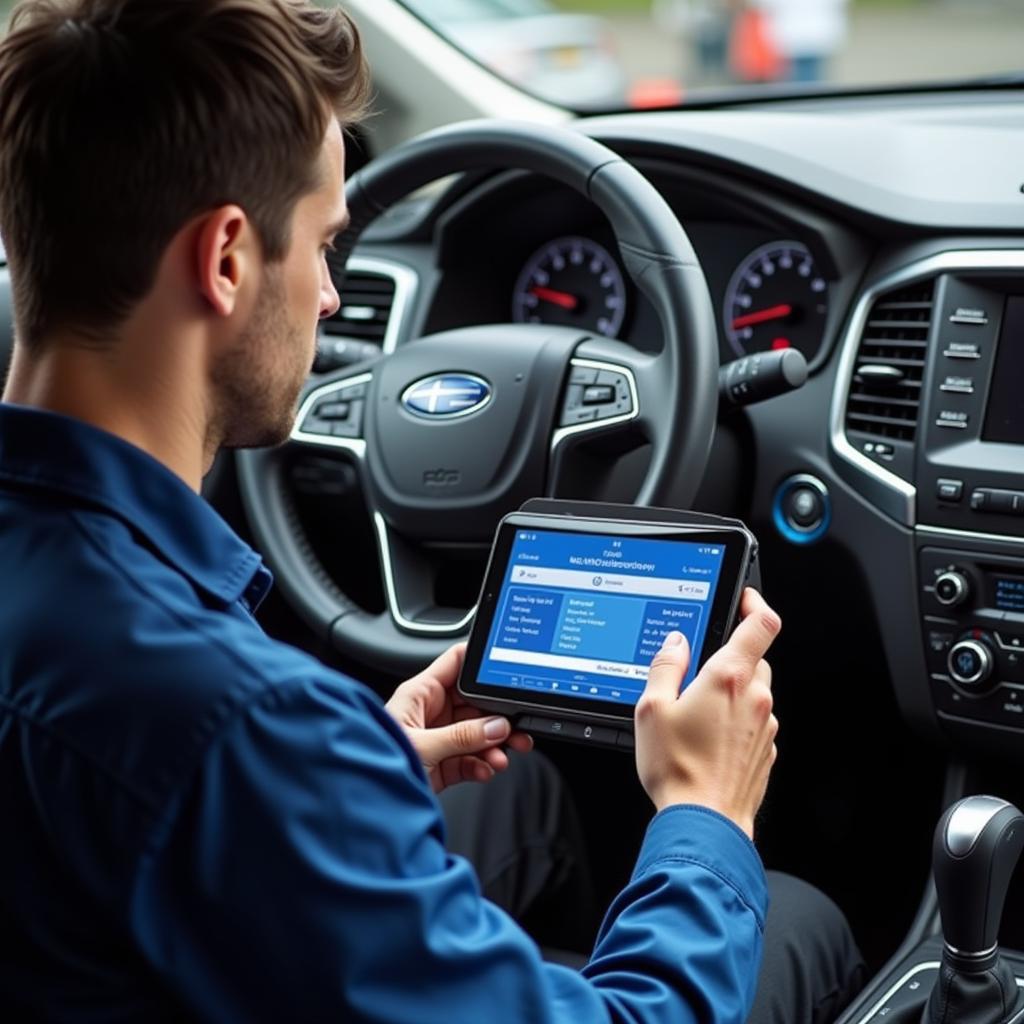Buying a used code reader scan tool can be a great way to save money, but it’s important to make sure that the tool is working properly before you hand over any cash. Here’s a comprehensive guide on how to thoroughly test a used code reader scan tool to ensure you’re getting a worthwhile investment.
Why Test Before You Buy?
A used vehicle scan tool might have hidden problems that aren’t immediately apparent. It might have been improperly used, stored, or even damaged. Testing it beforehand protects you from inheriting someone else’s problems.
Essential Tests Before Buying a Used Code Reader
1. Visual Inspection
Begin by carefully examining the scan tool’s physical condition.
- Check for Physical Damage: Look for any cracks, dents, or loose parts on the scanner’s body, screen, buttons, and especially the connector cable and OBD-II port.
- Inspect the Screen: Switch the device on and check the screen for any dead pixels, dimming, or flickering. Ensure the display is clear and easy to read.
- Test the Buttons: Press each button to make sure they are responsive and functioning correctly.
[image-1|used-code-reader-physical-inspection|Inspecting a used code reader|A person is holding a used code reader in their hands, closely examining its physical condition. They are checking for any cracks, dents, loose parts, and inspecting the screen and buttons for functionality.]
2. Functionality Testing
After the visual inspection, move on to testing the core functions of the code reader:
- Power On and Initialization: The device should power on quickly, and the initialization sequence should complete successfully.
- Software Version: Check if the code reader has the latest software version. Outdated software might not be compatible with newer vehicle models or lack certain features.
- Menu Navigation: Navigate through the different menus and options. Ensure the menus load quickly and the navigation is smooth and intuitive.
[image-2|used-code-reader-menu-navigation|Navigating the menu on a used code reader| Close-up shot of a hand navigating through the menu of a used code reader, demonstrating the menu loading and navigation process.]
3. Vehicle Connection and Communication
Now, it’s time to see if the code reader can communicate with a vehicle:
- Establish Connection: Connect the code reader to a vehicle’s OBD-II port. The location of the port can vary, but it’s typically found under the dashboard on the driver’s side.
- Read Vehicle Identification Number (VIN): The code reader should be able to successfully retrieve the vehicle’s VIN, indicating a proper connection.
- Read and Clear Codes: Check if the scanner can read and clear any existing Diagnostic Trouble Codes (DTCs). If possible, intentionally trigger a code by disconnecting a sensor (like the mass airflow sensor) to see if the code reader detects it.
- Live Data Stream: Access the live data stream from the vehicle’s ECU. The data should display clearly, and the refresh rate should be adequate. This test verifies that the tool can receive and display real-time data from the vehicle.
[image-3|used-code-reader-vehicle-connection|Connecting a used code reader to a car’s OBD-II port|A hand is shown connecting a used code reader to the OBD-II port located under the dashboard of a vehicle.]
4. Additional Features
Depending on the model, code readers might have additional features. Be sure to test these as well:
- ABS, SRS, or Other System Support: If the scanner claims to support systems beyond the engine, test these functions.
- Special Functions: Test any special functions like ABS bleeding, steering angle sensor reset, or DPF regeneration, if applicable.
“When testing a used scan tool, always prioritize function over form,” says John Smith, Senior Automotive Engineer at ScanToolUS. “A few cosmetic blemishes are acceptable as long as the tool connects reliably, reads codes accurately, and displays live data smoothly.”
Red Flags to Watch Out For
- Obvious physical damage
- Unresponsive buttons or a dim screen
- Inability to connect to a vehicle’s OBD-II port
- Failure to read or clear codes
- Error messages or freezing during use
- Missing accessories or manuals
If you encounter any of these issues during testing, it’s best to move on and look for another code reader.
[image-4|used-code-reader-error-message|Error message displayed on a used code reader|A close-up shot of a used code reader displaying an error message on its screen. The message indicates a problem with the device.]
Conclusion
Thoroughly Testing A Used Code Reader Scan Tool is crucial to ensure you’re getting a functional and reliable device. By performing these tests, you can make an informed decision and potentially save yourself from future headaches and unexpected expenses.
For assistance in choosing the right auto scanning tools or for any scan tool diagnosis, feel free to contact the experts at ScanToolUS at +1 (641) 206-8880 or visit our office at 1615 S Laramie Ave, Cicero, IL 60804, USA.

